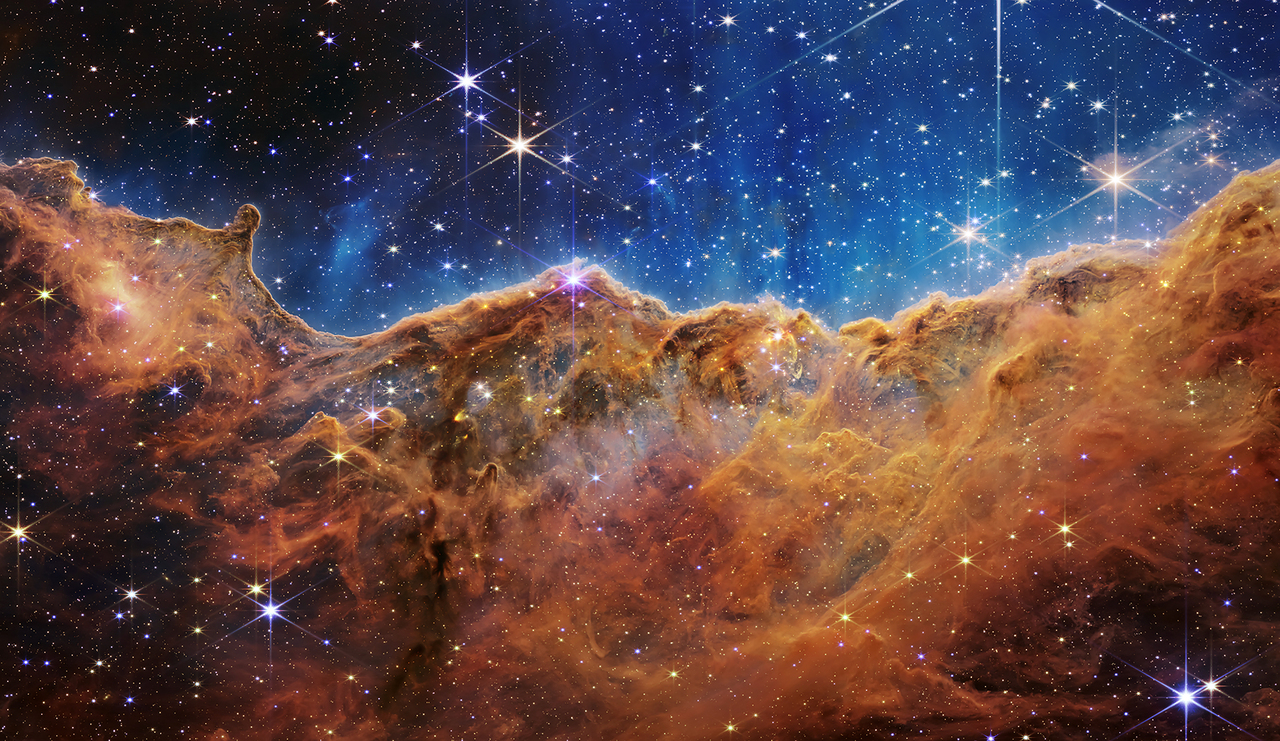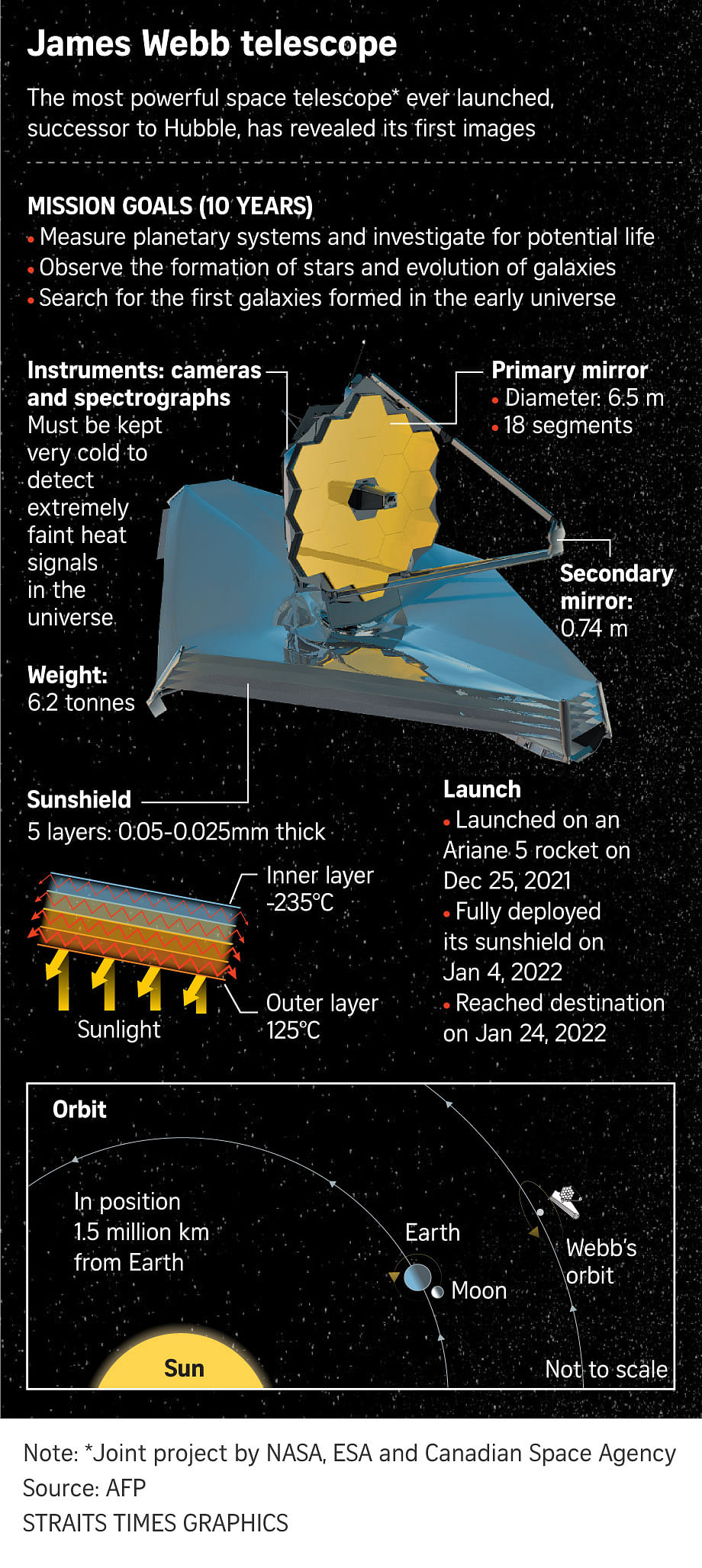ST Explains: How the Webb telescope sees into the universe's origins
Sign up now: Get ST's newsletters delivered to your inbox

A James Webb Space Telescope photo provided by NASA shows the Carina Nebula, showing the earliest stages of star formation.
PHOTO: NYTIMES
Follow topic:
NEW YORK (NYTIMES) - The Webb space telescope was built with some of the most advanced scientific instruments sent beyond Earth's orbit. Astronomers believe the spacecraft will help them understand more about black holes, how stars are born and die and what lies within the atmospheres of planets orbiting other stars; perhaps, it will even give us a glimpse of an era close to the Big Bang.
Why does seeing farther help scientists see billions of years into the past?
Remember the speed of light? A constant pace of more than 186,000 miles per second, or close to 6 trillion miles per year, through the vacuum of space.
That makes a light-year - the distance light travels in one year - a handy measuring stick for cosmic distances.
It also explains why looking out into the universe is looking into the past.
If a star is 10 light-years away, that means its light has taken 10 years to reach us: We are observing the star as it existed 10 years ago. (The light from the sun takes eight minutes to reach us on Earth.)
For the most distant objects that the Webb can detect, those particles of light have travelled some 13 billion light-years, travelling across space for 13 billion years. The light in the Webb "deep field" image released on Monday (July 11) is a snapshot of a part of the universe when it was less than 1 billion years old.
What could learning more about the period closer to the Big Bang teach astronomers?
When did the first stars light up? When did the first galaxies coalesce out of clouds of gas? How different were the first stars and galaxies from the ones that fill the universe today?
No one really knows. It's a missing chapter in the history of the universe. We know the universe started in an instant from the Big Bang. That explosion left a background hiss of microwave noise that was discovered in 1964, and it has been studied in detail in the decades since. The universe cooled down, matter began to clump and the first stars are thought to have formed about 100 million years after the Big Bang.
The early stars must have been different because the Big Bang created only hydrogen and helium with a smidgen of lithium and beryllium. None of the heavier elements - carbon, silicon, iron and the rest of the periodic table - existed. Some astrophysicists believe that many of the first stars, devoid of heavier elements, were huge, burned bright and died young in supernova explosions to disperse materials that could later form planets and, eventually, living creatures like us.
The Webb is the first telescope that might be able to spot and analyse those early stars.

Why do the Webb's tools help advance this work?
The two main differences between Webb and Hubble are the size of their mirrors - bigger mirrors gather more light - and the wavelengths of light they observe. Hubble focused on visible and ultraviolet wavelengths, offering unparalleled new views of much of the universe.
But for the early universe, the infrared part of the spectrum becomes key. That is because of the Doppler effect. When a police car speeds by, the pitch of the siren is higher when the car is approaching and drops lower when it is speeding away. Essentially the same thing occurs with light. Objects speeding toward us appear bluer, and those moving away become redder because the receding motion stretches out of the wavelengths of the light particle. For the most distant objects, like the early stars and galaxies, much of the light has been shifted all the way to the infrared.
Infrared observations are essentially impossible from telescopes on Earth. The atmosphere blocks out those wavelengths.
Infrared observations can also be easily distorted by heat radiation. That is why Webb was placed 1 million miles from Earth and shaded by a huge sun shield. One of the instruments, the Mid-Infrared Instrument, or MIRI, has to be cooled to minus 447 degrees Fahrenheit to work properly.


